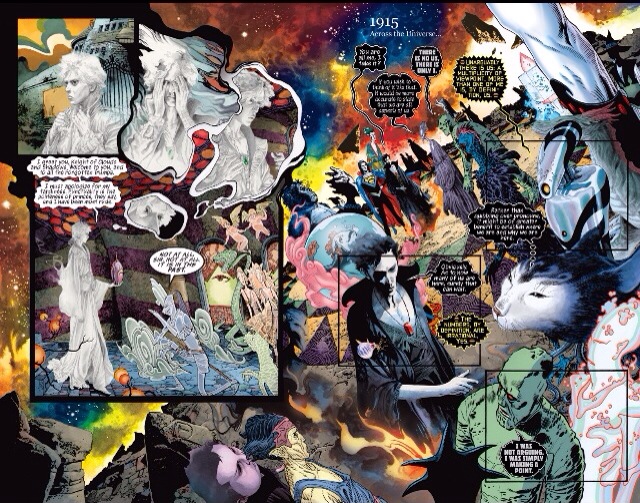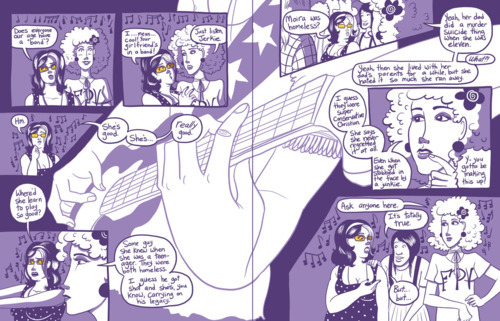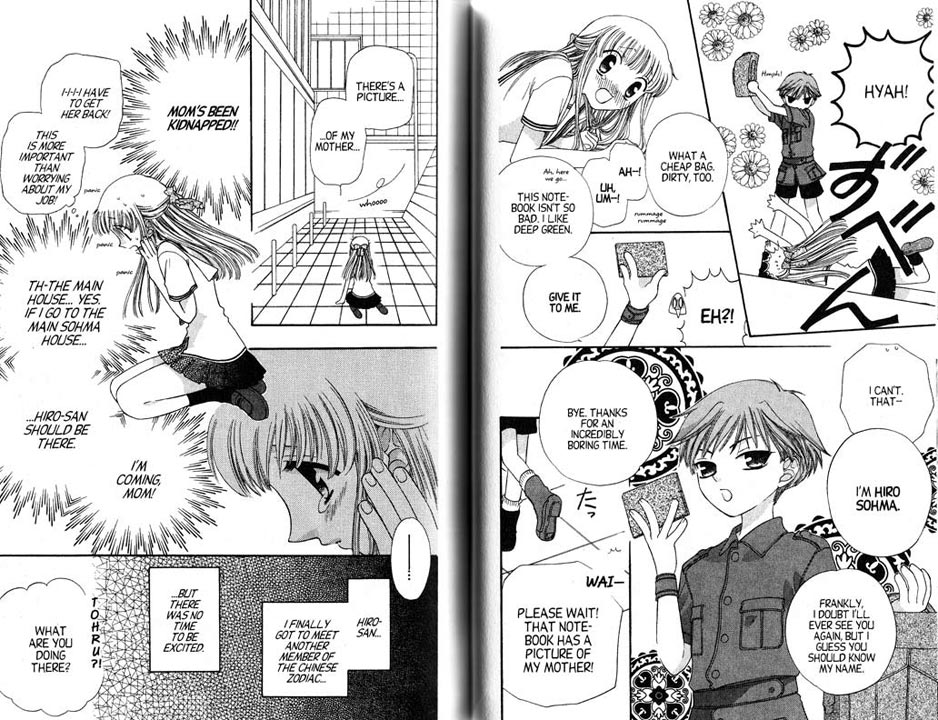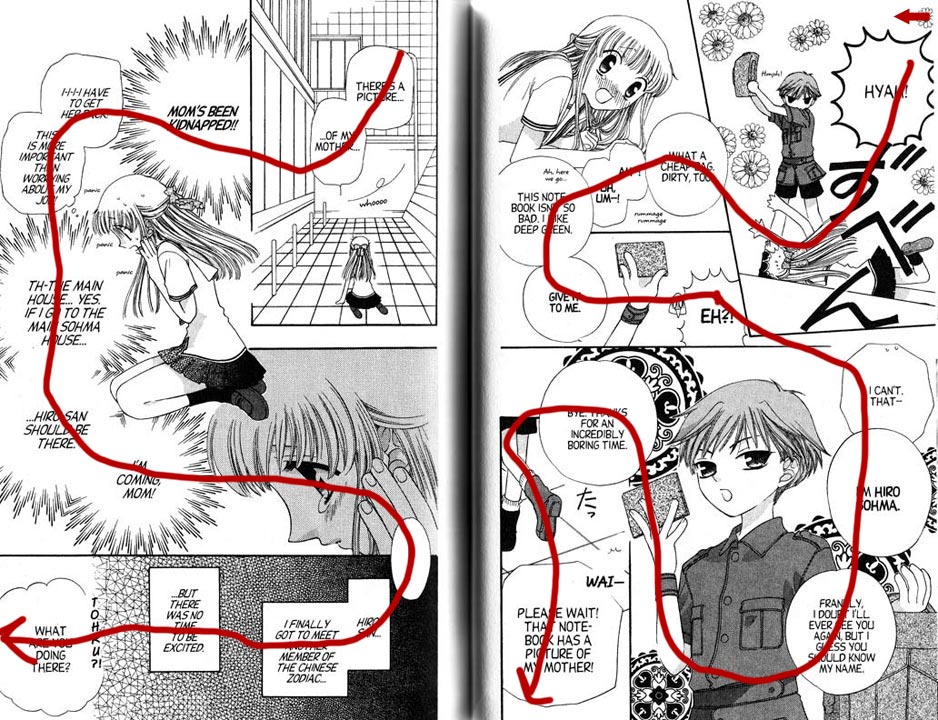|
|
Post by badwolf on Sept 17, 2018 17:17:36 GMT -5
I think it was a good call to re-establish Superman as the lone survivor of Krypton. To me, that's one of the defining elements of his story. All those products of the Silly Age, sorry Silver Age -- his cousin, a dog -- just dilute the concept.
At least with the Phantom Zone criminals it made sense as they were not anywhere near Krypton at the time, and since (in Byrne's story) they were killed at the end, it still leaves Supes as the only one left.
|
|
|
|
Post by Duragizer on Sept 17, 2018 17:49:36 GMT -5
I think it was a good call to re-establish Superman as the lone survivor of Krypton. To me, that's one of the defining elements of his story. All those products of the Silly Age, sorry Silver Age -- his cousin, a dog -- just dilute the concept. I think a happy balance should be struck between the Silver Age & post- Crisis extremes. Clark, Kara, some Phantom Zone prisoners, and that's it (sorry, Krypto). |
|
|
|
Post by comicsandwho on Sept 17, 2018 19:42:27 GMT -5
Krypto stays. Screw the Super-Monkey.
|
|
|
|
Post by zaku on Sept 18, 2018 1:11:16 GMT -5
Just to be clear, I don't think Byrne is lying and I certainly don't think he thought "Hm, how can I make this unnecessarily complicated?", I'm just saying that when he introduced/re-introduced certain concepts, he did so in a manner contrary to his "back to basics", "scraping barnacles", "fixing" approach. When I said "if Byrne brought back Supergirl to address copyright issues..." I wasn't questioning the validity of what he was saying, I was just trying to get to the point of what I took issue with. Ok, I get your point.  Just a couple of considerations: 1) How can someone judge the complication level of an origin story? How can I say that the origin of the character A is more/less complicated than the origin of character B? What are the metrics here? 2) The pre-Crisis Supergirl's origin isn't exactly a masterpiece of linearity, criticism-proof and without any inconsistency so no retcon was necessary. Here there are some pages from Supergirl #79, where Matrix has to swap the place with Kara and Peter David does a great job in summarising the origin of the latter:    Let's try to summarize in the same way Matrix's origin: Pocket Universe's Lex Luthor creates a protoplasmic being trying to emulate the powers of his universe's Superboy. Then he sends it in the mainstream universe to seek Superman's help. And... that's it.  |
|
|
|
Post by Chris on Sept 18, 2018 1:43:00 GMT -5
1) How can someone judge the complication level of an origin story? How can I say that the origin of the character A is more/less complicated than the origin of character B? What are the metrics here? 2) The pre-Crisis Supergirl's origin isn't exactly a masterpiece of linearity, criticism-proof and without any inconsistency so no retcon was necessary. Here there are some pages from Supergirl #79, where Matrix has to swap the place with Kara and Peter David does a great job in summarising the origin of the latter:    Let's try to summarize in the same way Matrix's origin: Pocket Universe's Lex Luthor creates a protoplasmic being trying to emulate the powers of his universe's Superboy. Then he sends it in the mainstream universe to seek Superman's help. And... that's it.  1) One metric is how easy it is to explain an origin to someone who doesn't read comics. Look at Hawkman 1961 compared to Hawkman 1994. If you are not familiar with both versions of the character, I can post details (be ready for an essay  ). The 1961 version is easy to explain to a non-comics reading person. By 1994, one needs diagrams and flow charts. 2) Silver Age Supergirl didn't have the simplest origin - it requires explaining how a Kryptonian city survived the explosion, then what happened to destroy the city and why she needed to be rocketed to Earth, and oh, hey, she just happens to be related to Superman. Not as simple as Superman's origin, for example. But Byrne's version of Supergirl requires explaining just what this Pocket Universe actually is, which spins into having to explain the Superboy/Legion of Super-Heroes conundrum, and then how did that conundrum come about, who the heck is the Time Trapper, and what do you mean I have to read all 12 issues of Crisis? Forget flow charts, a non-comics reader would need a powerpoint presentation to know what her deal is. I humorously exaggerate, but not by that much. P.S. I'm not saying complication is necessarily bad. I like some rather complex stories and characters. But regardless of whether the character was good or not, Byrne's version of Supergirl is more complicated than the Kara Zor-El version. |
|
|
|
Post by zaku on Sept 18, 2018 1:54:05 GMT -5
1) How can someone judge the complication level of an origin story? How can I say that the origin of the character A is more/less complicated than the origin of character B? What are the metrics here? 2) The pre-Crisis Supergirl's origin isn't exactly a masterpiece of linearity, criticism-proof and without any inconsistency so no retcon was necessary. Here there are some pages from Supergirl #79, where Matrix has to swap the place with Kara and Peter David does a great job in summarising the origin of the latter:    Let's try to summarize in the same way Matrix's origin: Pocket Universe's Lex Luthor creates a protoplasmic being trying to emulate the powers of his universe's Superboy. Then he sends it in the mainstream universe to seek Superman's help. And... that's it.  1) One metric is how easy it is to explain an origin to someone who doesn't read comics. Look at Hawkman 1961 compared to Hawkman 1994. If you are not familiar with both versions of the character, I can post details (be ready for an essay  ). The 1961 version is easy to explain to a non-comics reading person. By 1994, one needs diagrams and flow charts. 2) Silver Age Supergirl didn't have the simplest origin - it requires explaining how a Kryptonian city survived the explosion, then what happened to destroy the city and why she needed to be rocketed to Earth, and oh, hey, she just happens to be related to Superman. Not as simple as Superman's origin, for example. But Byrne's version of Supergirl requires explaining just what this Pocket Universe actually is, which spins into having to explain the Superboy/Legion of Super-Heroes conundrum, and then how did that conundrum come about, who the heck is the Time Trapper, and what do you mean I have to read all 12 issues of Crisis? Forget flow charts, a non-comics reader would need a powerpoint presentation to know what her deal is. I humorously exaggerate, but not by that much. P.S. I'm not saying complication is necessarily bad. I like some rather complex stories and characters. But regardless of whether the character was good or not, Byrne's version of Supergirl is more complicated than the Kara Zor-El version. [pedantic mode ON]I don't believe that you need to include the origin of the Pocket Universe in Matrix's origin (like someone hasn't to include the origin of Earth-1 Universe in Pre-Crisis Batman's Origin) and if anything, it's something that is strictly relevant to Pocket Universe's Superboy. And we don't need to include his origin in Matrix's, like we don't include every time Batman's origin in Robin's[pedantic mode OFF]  Your turn. |
|
|
|
Post by zaku on Sept 18, 2018 2:04:17 GMT -5
Now I propose this new metric of a superhero's origin complexity: I will call it...
The Zaku SuperOrigin Complexometer™!
The metric is defined by how many steps you need to describe the transformation of a character from her/his previous "normal" state to her/his more know Superhero persona.
For example, how many steps do you need to describe the transformation of Peter Parker, from high school student to Spider-Man? The resultant number is Spider-Man's origin complexity degree!
|
|
|
|
Post by zaku on Sept 18, 2018 2:52:48 GMT -5
One metric is how easy it is to explain an origin to someone who doesn't read comics. You know, once I met a person who never had read a comics in her whole life, and I had to explain how to read a comic book to her, in what order read the panels and the ballons and how to understand which character was speaking. It's not simple as it seems... |
|
Confessor
CCF Mod Squad
Not Bucky O'Hare!
Posts: 10,222 
|
Post by Confessor on Sept 18, 2018 5:29:29 GMT -5
You know, once I met a person who never had read a comics in her whole life, and I had to explain how to read a comic book to her, in what order read the panels and the ballons and how to understand which character was speaking. I have a dim, distant memory of my mother explaining how to read a comic to me like that. Though we all take it for granted now, I guess it's maybe not that obvious how a comic should be read, if you've never done it before. Mind you, in my defence I was probably 3 or 4 years old when I had it explained to me. |
|
|
|
Post by Icctrombone on Sept 18, 2018 5:38:54 GMT -5
I can't imagine it being difficult to figure out who's talking when there are word balloons included. In America we read left to right , maybe if you're in Japan it might take an explanation.
|
|
|
|
Post by zaku on Sept 18, 2018 7:29:44 GMT -5
I can't imagine it being difficult to figure out who's talking when there are word balloons included. In America we read left to right , maybe if you're in Japan it might take an explanation. Trust me... if you are over 40-50 and you never read a comics in your life it can be quite difficult (regardless the reading direction). And not all comics are created equal. For example, this is a page from an Italian comics, Tex, where the editor has always insisted on a focus on legibility:  As you can see, it uses the classic 6-panel grid and it's quite simple to understand what's going on. After you explained to the above-mentioned senior citizen how to read this page, you meet THIS!  Or this  Or a layout where even I don't know (after year of reading comics) which is the correct reading order...  Which is the correct one? The first or the second? Now you have lost your senior citizen... |
|
|
|
Post by Icctrombone on Sept 18, 2018 8:00:35 GMT -5
There are times when I ( person reading comics for over 40 years) don't know what panel to read next. But I write that off to poor panel layout. Generally it's left to right for the panels , up to down for the dialogue.
|
|
|
|
Post by zaku on Sept 18, 2018 8:29:59 GMT -5
There are times when I ( person reading comics for over 40 years) don't know what panel to read next. But I write that off to poor panel layout. Generally it's left to right for the panels , up to down for the dialogue. The key word is "generally". Even considering the specular nature of the manga (so your rule would be "Right to left") you cannot apply it for every example out there. For example:  Where the correct reading order would be  |
|
|
|
Post by Icctrombone on Sept 18, 2018 8:33:03 GMT -5
I forgot to add the word " American comics" in my previous post. I was aware that Manga reads the other way.
|
|
|
|
Post by Icctrombone on Sept 18, 2018 8:36:27 GMT -5
In the TV show Family Guy, they killed off the dog. I was shocked but apparently they brought him back later on in the season. Maybe there was backlash ?
|
|